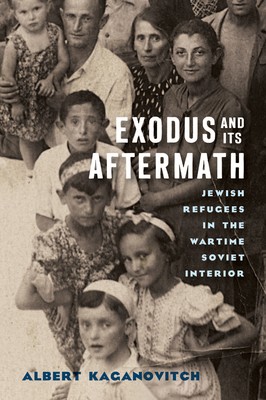
- We will send in 10–14 business days.
- Author: Albert Kaganovitch
- Publisher: University of Wisconsin Press
- ISBN-10: 0299334546
- ISBN-13: 9780299334543
- Format: 15.2 x 22.9 x 1.8 cm, minkšti viršeliai
- Language: English
- SAVE -10% with code: EXTRA
Reviews
Description
During World War II, some two million Jewish refugees relocated from the western regions of the USSR to the Soviet interior. Citizens in the Central Asian territories were at best indifferent--and at worst openly hostile--toward these migrants. Unpopular policies dictated that residents house refugees and share their limited food and essentials with these unwelcome strangers. When the local population began targeting the newcomers, Soviet authorities saw the antisemitic violence as discontentment with the political system itself and came down hard against it. Local authorities, however, were less concerned with the discrimination, focusing instead on absorbing large numbers of displaced people while also managing regional resentment during the most difficult years of the war. Despite the lack of harmonious integration, party officials spread the myth that they had successfully assimilated over ten million evacuees.
Albert Kaganovitch reconstructs the conditions that gave rise to this upsurge in antisemitic sentiment and provides new statistical data on the number of Jewish refugees who lived in the Urals, Siberia, and Middle Volga areas. The book's insights into the regional distribution and concentration of these émigrés offer a behind-the-scenes look at the largest and most intensive Jewish migration in history.EXTRA 10 % discount with code: EXTRA
The promotion ends in 23d.17:19:16
The discount code is valid when purchasing from 10 €. Discounts do not stack.
- Author: Albert Kaganovitch
- Publisher: University of Wisconsin Press
- ISBN-10: 0299334546
- ISBN-13: 9780299334543
- Format: 15.2 x 22.9 x 1.8 cm, minkšti viršeliai
- Language: English English
During World War II, some two million Jewish refugees relocated from the western regions of the USSR to the Soviet interior. Citizens in the Central Asian territories were at best indifferent--and at worst openly hostile--toward these migrants. Unpopular policies dictated that residents house refugees and share their limited food and essentials with these unwelcome strangers. When the local population began targeting the newcomers, Soviet authorities saw the antisemitic violence as discontentment with the political system itself and came down hard against it. Local authorities, however, were less concerned with the discrimination, focusing instead on absorbing large numbers of displaced people while also managing regional resentment during the most difficult years of the war. Despite the lack of harmonious integration, party officials spread the myth that they had successfully assimilated over ten million evacuees.
Albert Kaganovitch reconstructs the conditions that gave rise to this upsurge in antisemitic sentiment and provides new statistical data on the number of Jewish refugees who lived in the Urals, Siberia, and Middle Volga areas. The book's insights into the regional distribution and concentration of these émigrés offer a behind-the-scenes look at the largest and most intensive Jewish migration in history.

Reviews